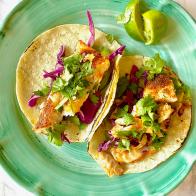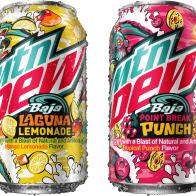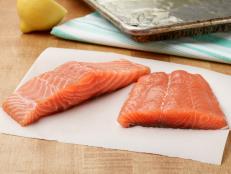One Fish, Two Fish — Try a New Fish

We’re used to hearing dire predictions about our oceans and to feeling mounting concern about the seafood on our plates. But recent months have brought exciting news for fish lovers, cooks and people who care about seafood sustainability, an inspiring story of recovery and renewal.
Just 15 years ago, in 2000, the West Coast groundfish fishery was declared a federal disaster. Overfishing and sea-floor habitat damage caused by fishing gear had devastated the federal waters off the shore of California, Oregon and Washington, where fishermen trawl and cast their lines to catch a hugely diverse population of more than 90 species of rockfish, flatfish, roundfish, sharks, skates and, as the Environmental Defense Fund’s Tim Fitzgerald put it in a recent recent Chefs Collaborative “Chef Power Hour,” “just about any type of fish that you could ever want to buy or serve.”
As a result, the fishery was, Fitzgerald said, “a perpetual red lister,” referring to the Monterey Bay Aquarium Seafood Watch’s color-coded designations letting consumers know which fish to “Avoid” due to overfishing or environmental concerns (red), which are a “Good Alternative,” although to be approached with some caution (yellow), and which are a “Best Choice” (green).
I know, sad. But here’s the good news: In the intervening years, the fishery has worked with fishermen, regulators and conservationists to improve its environmental footprint by employing quotas, area restrictions, seasonal closures and gear restrictions, and by requiring fishermen to bring federal observers along on every trip.
The results have been dramatic: In September 2014, Seafood Watch announced that it had upgraded 21 West Coast groundfish — many of them previously listed as species to “Avoid” — to either a “Best Choice” or a “Good Alternative.”
“Now nearly 50 species of groundfish — rockfish, flatfish, lingcod and other fish — are available as Seafood Watch green or yellow choices,” Sheila Bowman, Seafood Watch manager of culinary and strategic initiatives at the Monterey Bay Aquarium, in Monterey, Calif., tells Healthy Eats. “In the past, these species were favorites found mainly on the West Coast, but now chefs and consumers nationwide are discovering and asking for these delicious, ocean-friendly fish.”
Bowman and others would love to see chefs and consumers seek out these fish and experiment with them in their kitchens. By doing so, they’ll not only show support for the West Coast fishery’s environmental efforts but also get others to note that sustainability and success can go hand in hand, and perhaps inspire them to follow suit.
Plus, they’ll get to expand their repertoires — and their palates. The flatfishes are delicate, making them especially suitable for a sole meuniere. The rockfish are light, white and flaky — a good choice for seafood tacos.
“Cooks can be excited about the new flavors and textures that fish like the Chilipepper rockfish, the lingcod and the sand dab will bring to their plate,” Bowman says.
So if you’re tiring of tilapia and sick of salmon, here are a few alternatives:
So how do you find them? Look for any of the above species by name — and check or ask to make sure it was caught in California, Oregon or Washington. (You can also check the Seafood Watch website or app to learn more and share the details with your grocer or chef.)
“Consumers need to shop for these fish by name and origin,” Bowman explains. “Just like we ask for Brandywine tomatoes, Alaska salmon, Wisconsin cheddar, French champagne and other goods with an important provenance, these products can be requested.”
And if these fish aren’t yet available at your favorite fish seller or restaurant, don’t despair. “As with anything new, it may take months to get retailers and chefs aware and tuned in to buying these products,” Bowman says, but just by asking, you may be helping the world take a step toward greater seafood sustainability — a pretty easy way to make an impact.

































